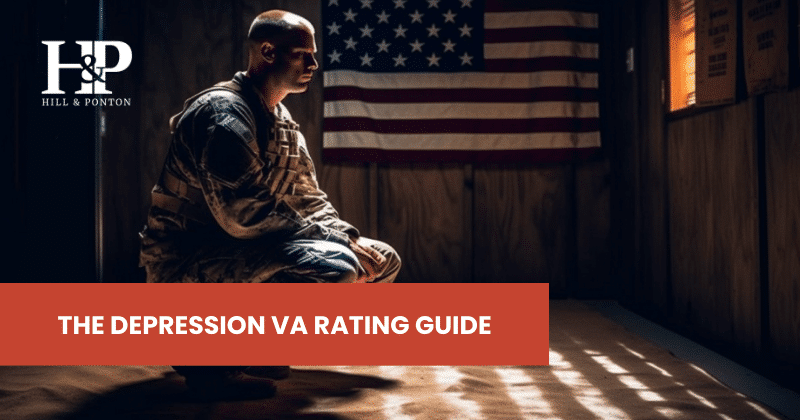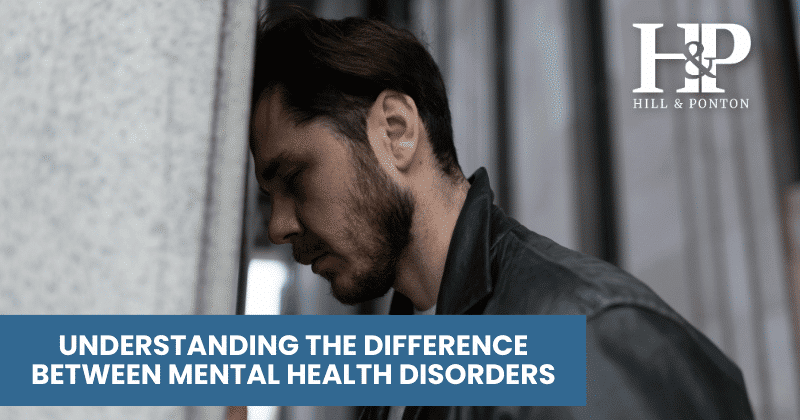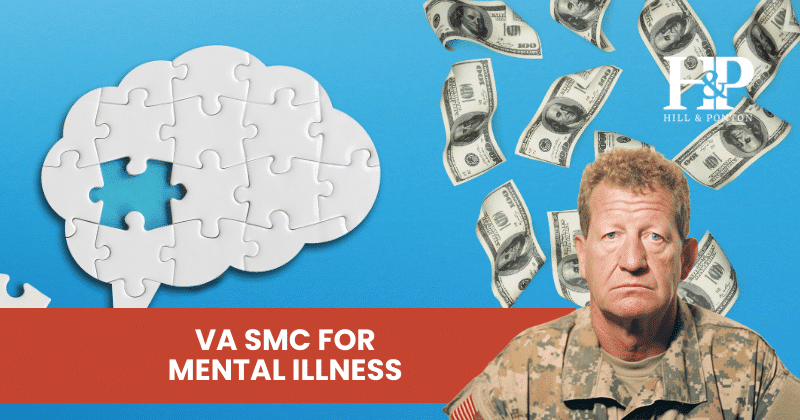Premenstrual Dysphoric Disorder (PMDD) affects a significant number of women veterans and can have a profound impact on their daily lives.
PMDD is a severe form of premenstrual syndrome (PMS) that can cause physical and emotional symptoms such as depression, anxiety, and irritability.
Despite its prevalence, PMDD remains stigmatized and misunderstood, making it challenging for women veterans to receive a proper diagnosis and treatment.
In this article, we will explore the symptoms, diagnosis, and treatment of PMDD in women veterans, as well as how it affects mental health.
We’ll also address the stigma and misunderstandings surrounding PMDD and provide coping strategies for managing its symptoms.
By raising awareness and understanding PMDD, women veterans can take steps to improve their overall well-being and quality of life.
What is PMDD?
PMDD, or Premenstrual Dysphoric Disorder, is a hormonal disorder that affects some women during their menstrual cycle.
It is a severe form of premenstrual syndrome (PMS) and can cause physical, emotional, and behavioral symptoms that can significantly impact daily life.
Women with PMDD may experience symptoms such as mood swings, irritability, depression, anxiety, and fatigue in the week or two before their menstrual period.
Prevalence of PMDD in Women Veterans
PMDD affects a significant number of women, including women who have served in the military.
According to a study published in the Journal of Women’s Health, the prevalence of PMDD in women veterans was found to be 9.3%.
Studies have shown that women veterans are more likely to experience PMDD than their civilian counterparts.
There are limited studies that directly examine the association between combat exposure, military sexual trauma, and PMDD in women veterans.
However, a study published in the Journal of Traumatic Stress found that women with a history of military sexual trauma had a significantly increased likelihood of experiencing premenstrual dysphoric disorder (PMDD) compared to women without such a history.
The study suggests that military sexual trauma is a risk factor for PMDD in women veterans.
Key Differences Between PMDD and PMS
While PMDD and PMS share many symptoms, there are some key differences between the two.
PMDD symptoms are more severe than PMS symptoms and can significantly interfere with daily life.
Additionally, PMDD symptoms occur only in the luteal phase of the menstrual cycle, while PMS symptoms can occur at any point in the second half of the menstrual cycle.
A healthcare provider can help diagnose whether a person is experiencing PMS or PMDD.
| Premenstrual Syndrome (PMS) | Premenstrual Dysphoric Disorder (PMDD) | |
| Definition | Physical, emotional, and behavioral symptoms that occur in the days leading up to menstruation | A more severe form of PMS that includes emotional symptoms severe enough to disrupt daily activities |
| Symptoms | Physical symptoms such as bloating, breast tenderness, and headaches; emotional symptoms such as irritability and mood swings | Physical symptoms similar to PMS; emotional symptoms such as severe depression, anxiety, and irritability |
| Severity | Mild to moderate symptoms that may cause discomfort but do not significantly disrupt daily activities | Symptoms severe enough to interfere with work, school, and social activities |
| Diagnosis | Based on the presence of physical and emotional symptoms during the luteal phase of the menstrual cycle (last two weeks of the cycle) for at least two menstrual cycles | Diagnosis requires the presence of at least five emotional symptoms, including one of four key symptoms (depressed mood, anxiety, mood swings, irritability), during the luteal phase for at least two menstrual cycles |
| Treatment | Over-the-counter pain relievers and lifestyle changes such as exercise and stress reduction | Medications such as antidepressants and hormonal birth control may be prescribed in addition to lifestyle changes |
| Prevalence | Up to 90% of women experience PMS symptoms at some point in their lives | Approximately 5% of women experience PMDD, with higher rates in women with a history of depression or other mood disorders |
Symptoms, Diagnosis, and Treatment of PMDD in Women Veterans
PMDD can cause a range of physical and emotional symptoms that can significantly affect daily life. Some common symptoms of PMDD include:
- Mood swings
- Irritability
- Depression
- Anxiety
- Fatigue
- Bloating
- Breast tenderness
- Headaches
Diagnosis of PMDD typically involves a medical evaluation and tracking of symptoms.
A healthcare provider may ask about a person’s symptoms and their menstrual cycle to determine whether they are experiencing PMDD or another condition.
Keeping a symptom diary can also help a healthcare provider diagnose PMDD.
Treatment options for PMDD include medication and lifestyle changes.
Selective serotonin reuptake inhibitors (SSRIs) are commonly used to treat PMDD, as they can help alleviate symptoms such as depression and anxiety.
Birth control pills may also be prescribed to regulate hormones and reduce symptoms.
Lifestyle changes, such as getting regular exercise, eating a balanced diet, and reducing stress, can also help manage PMDD symptoms.
In addition to these treatments, women veterans may also benefit from counseling or therapy to address the emotional and psychological effects of PMDD.
It’s important for women veterans to work with their healthcare provider to find a treatment plan that works for them and to receive the support they need to manage their symptoms.
How PMDD Affects Mental Health in Women Veterans
PMDD can have a significant impact on mental health, particularly in women veterans who may already be dealing with the psychological effects of military service.
A study published in the Journal of Women’s Health found that women veterans with PMDD are at an increased risk of developing mental health conditions such as depression and anxiety.
The study reported that women veterans with PMDD had higher rates of depression and anxiety compared to women veterans without PMDD.
Additionally, the study found that women veterans with PMDD were more likely to have a history of trauma, which may contribute to the development of both PMDD and mental health conditions.
Some women with PMDD may experience depression and anxiety, and these symptoms may worsen in the days leading up to their menstrual period.
The hormonal fluctuations that occur during the menstrual cycle can exacerbate these symptoms, leading to more severe mood changes and other mental health challenges.
Risk factors for Developing PMDD and Mental Health Conditions
There are several risk factors for developing PMDD and other mental health conditions, particularly in women veterans.
- Exposure to combat or other traumatic events during military service
- Military sexual trauma (MST) and other forms of sexual abuse or assault
- Chronic stress and/or trauma, including from deployment or combat exposure
- Co-occurring mental health conditions such as depression or anxiety
- Substance use or abuse, including alcohol and drugs
- Lack of social support or a strong support network
- History of childhood abuse or trauma
- Genetics and family history of mood disorders
It’s important to note that while these risk factors may increase the likelihood of developing PMDD and other mental health conditions, they do not necessarily mean that someone will develop these conditions.
It’s also possible for individuals without these risk factors to experience PMDD or other mental health issues.
Strategies for Managing Mental Health and PMDD Symptoms
There are several strategies that women veterans can use to manage their mental health and PMDD symptoms.
- Regular exercise and physical activity, which can help improve mood and reduce stress levels
- Mindfulness-based techniques such as meditation or yoga, which can help reduce symptoms of anxiety and depression
- Getting enough restful sleep on a regular basis
- Eating a healthy, balanced diet with plenty of whole foods and avoiding excess caffeine, sugar, and alcohol
- Developing a strong support network, including friends, family, and mental health professionals
- Seeking professional help from a therapist or psychiatrist, who can provide medication or other treatments as needed
- Engaging in activities that bring joy or a sense of purpose, such as volunteering, hobbies, or creative pursuits
- Educating oneself and others about PMDD and mental health, in order to reduce stigma and increase awareness
- Setting realistic goals and boundaries, and prioritizing self-care and personal needs.
It’s important for women veterans to work with their healthcare provider to find a treatment plan that works for them and to receive the support they need to manage their symptoms.
VA Disability Benefits for PMDD: Exploring Alternative Opportunities
While PMDD is not currently recognized as a separate disability by the Department of Veterans Affairs (VA), veterans who experience the condition may still be eligible for disability benefits if they experience symptoms that meet the criteria for a recognized disability, such as major depressive disorder or anxiety disorder.
However, it can be challenging to receive benefits for PMDD due to its lack of recognition as a separate diagnosis.
Fortunately, there are alternative opportunities available for women veterans who experience PMDD.
One option is to seek VA disability benefits for a mental health condition that is commonly associated with PMDD, such as depression or anxiety.
The team at Hill & Ponton may be able to assist you with a denial of benefits for mental health disorders. Click the button below to get more information.

Another option for women veterans with PMDD is to apply for benefits through the VA’s Women Veterans Health Care program.
This program provides a range of services to women veterans, including mental health services and counseling.
Women veterans can also seek treatment for PMDD symptoms through the VA’s Women’s Mental Health Center of Excellence, which provides specialized care for women veterans with mental health conditions.
In addition to seeking VA benefits, women veterans with PMDD can also explore alternative forms of support and resources, such as support groups, therapy, and complementary therapies like yoga and meditation.
These resources can help women veterans manage their symptoms and improve their overall quality of life.
Addressing Stigma and Misunderstandings Surrounding PMDD in Women Veterans
Despite being a recognized medical condition, PMDD is still misunderstood and stigmatized in many communities, including in the military and veteran communities.
According to a study published in the Journal of Women’s Health, women with PMDD experience significant stigma and negative perceptions from healthcare providers and others in their lives.
Some common myths and misconceptions about PMDD include that it’s just “PMS on steroids” or that it’s not a real medical condition.
These misunderstandings can lead to women veterans feeling dismissed or unsupported when they seek help for their symptoms.
A study published in the Journal of Affective Disorders found that women with PMDD often experience a sense of shame and guilt surrounding their symptoms, and may avoid seeking help due to fear of being stigmatized.
The Importance of Raising Awareness and Reducing Stigma
Raising awareness and reducing stigma around PMDD is crucial to ensuring that women veterans receive the care and support they need.
This can involve educating healthcare providers and the general public about the reality of PMDD and dispelling common myths and misconceptions.
It can also involve creating safe spaces for women veterans to discuss their experiences with PMDD and connect with others who may be going through similar challenges.
Resources for Women Veterans to Learn More about PMDD
There are many resources available for women veterans who want to learn more about PMDD and connect with others who have the condition.
The Department of Veterans Affairs (VA) Women Veterans Health Care program offers a range of resources and support services for women veterans, including information on reproductive health and mental health.
Additionally, organizations like the National Association of Mental Health (NAMI) and the International Association for Premenstrual Disorders (IAPMD) offer educational resources and support for women with PMDD and other related conditions.
By accessing these resources and building a community of support, women veterans can better understand their experiences with PMDD and find the help they need to manage their symptoms.
Coping Strategies for Women Veterans with PMDD
While there is no cure for PMDD, there are many strategies that women veterans can use to manage their symptoms and improve their overall well-being. These strategies include:
Strategies for Managing PMDD Symptoms
- Practicing self-care, such as getting enough sleep, eating a healthy diet, and exercising regularly
- Tracking symptoms and identifying triggers for PMDD episodes
- Developing healthy coping mechanisms, such as mindfulness meditation or journaling
Tips for Creating a Support Network and Seeking Professional Help
- Reaching out to loved ones or joining a support group for women veterans with PMDD
- Seeking professional help, such as therapy or medication, if symptoms are interfering with daily life
PMDD can have a significant impact on the mental and physical health of women veterans, but with the right strategies and support, it is possible to manage the condition and improve overall well-being.
By understanding the symptoms of PMDD, seeking professional help, and building a support network, women veterans can take control of their health and find the resources they need to thrive.
With continued education and awareness, we can help reduce the stigma and misunderstanding surrounding PMDD and ensure that all women veterans receive the care and support they deserve.








